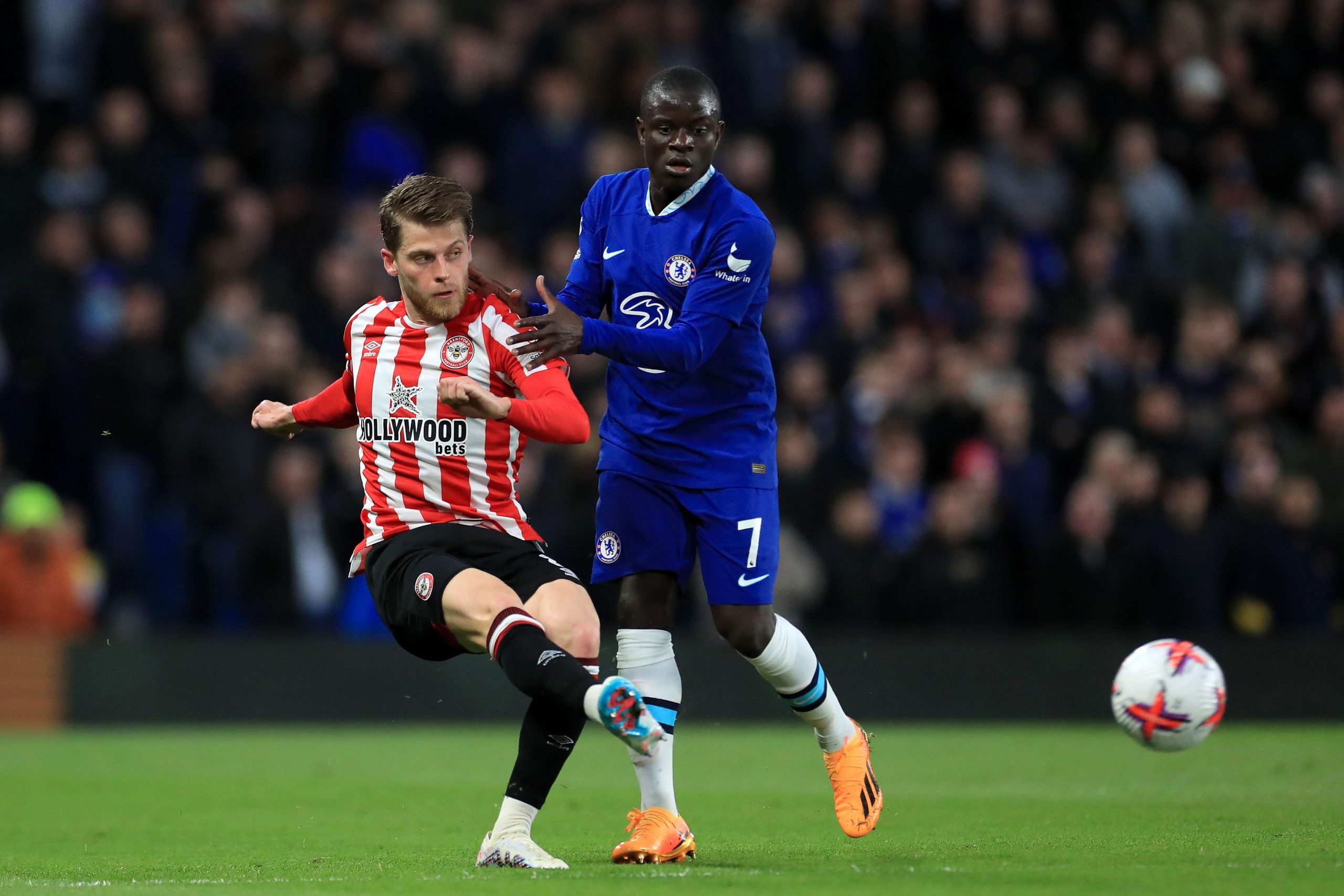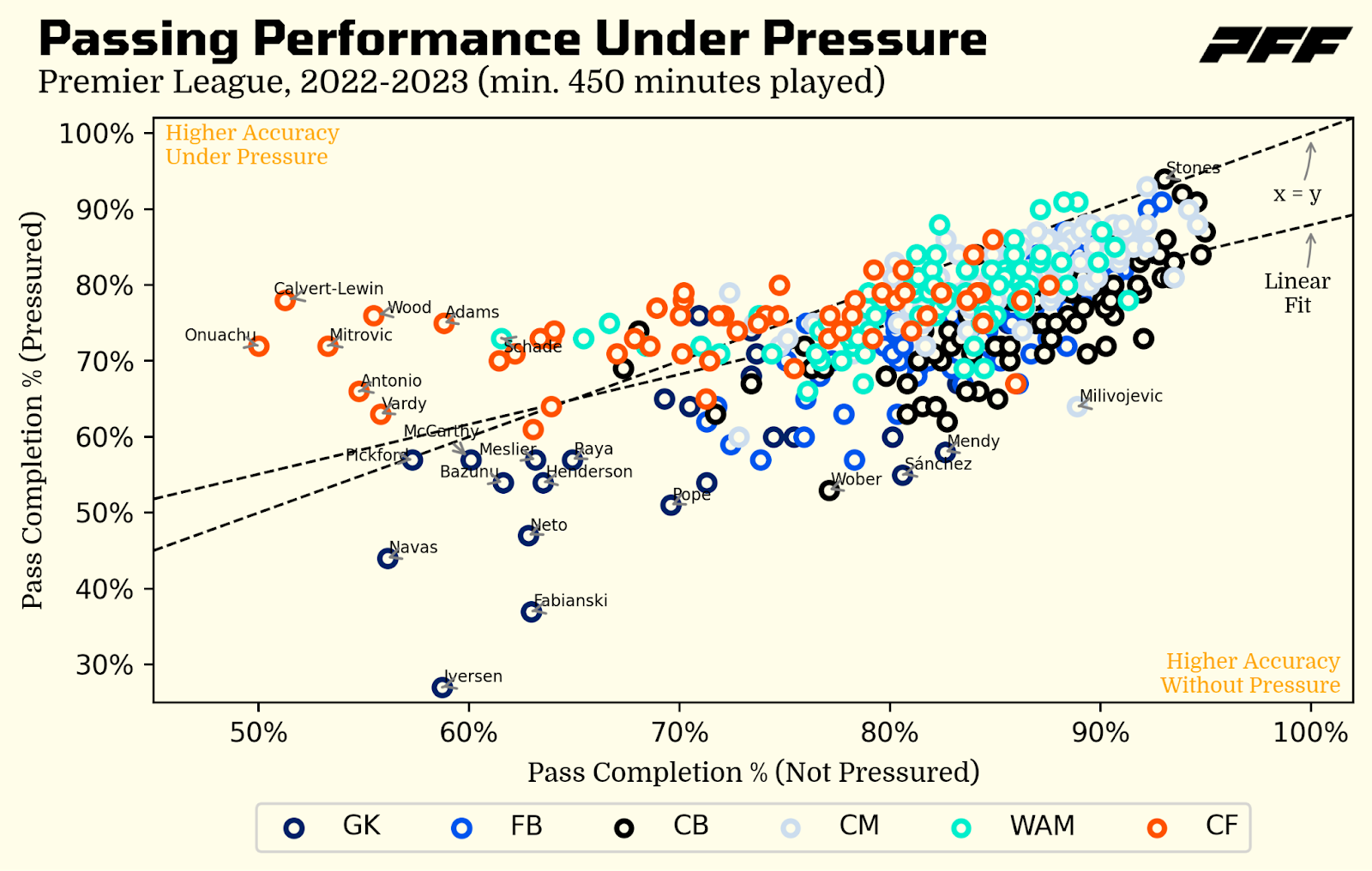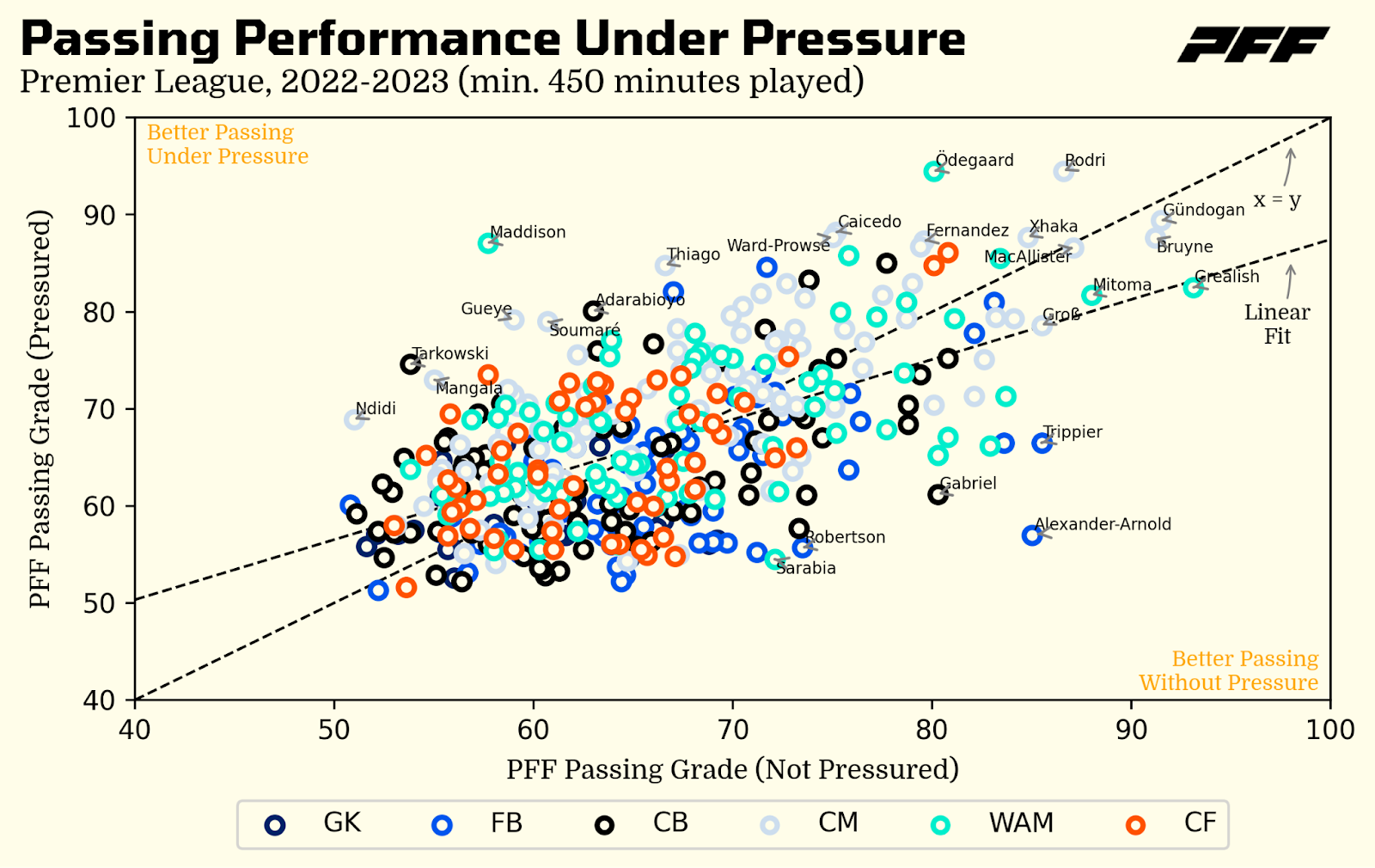Everybody who has ever played a game of football knows that completing a pass under pressure is an entirely different feat than having all the time in the world to pick out your target.
Pressure is an important element in both sports we cover at PFF and something we take very seriously. We’ve taken our experience in evaluating pressure from NFL and college football to design a meticulous pressure process that captures whenever a player attempts to put their opponent under pressure by actively closing the space between them.
The yardage of what is deemed a pressure can either shrink or expand based on the intensity and direction of the players involved.
We first introduced our pressure metrics with a look at the Bundesliga rates and the Premier League rates from the 2023/24 season, focussing on the players who applied the pressure when out of possession. But pressure is a two-way street that also allows us to analyse the player who is under pressure as a ball carrier.
In this article, we will dive into passing performance in the Premier League while the passer is directly under pressure. This means we are excluding what we call lane pressures, when the pressing player attempts to close down the passing lane rather than directly pressuring the passer.

In today's game, the art of pressing seems to be thriving; teams across all levels are adopting a multitude of strategies to regain possession, with different degrees of intensity and across different zones of the pitch. Players who are capable of resisting pressure have become invaluable assets that are highly sought after. So let’s use PFF pressure data to identify the best passers under pressure.
First, we turn our attention to a traditional metric: pass completion. As we mentioned earlier, it should be easier for a passer to complete his pass when he is not under pressure. This is confirmed by the graph below: for pass completion percentages above 65% on unpressured passes, the trend line predicts a lower expected completion rate when passes are made under pressure. We also see two interesting patterns for lower pass completion rates without pressure: goalkeepers tend to have impressively low accuracy when faced with pressure (risk averse behaviour), and there's a group of centre forwards who excel in passing accuracy under pressure while having low pass completion rates without. These centre forwards tend to get into (and win) a lot of aerial duels, passes from which are inherently under pressure.

Ignoring goalkeepers and players with pass completion rates below 65% for unpressured passes, the players that have the biggest decline in accuracy when pressured are Luka Milivojevic (Crystal Palace), Maximilian Wober (Leeds United), Rasmus Kristensen (Leeds United), Fabian Schär (Newcastle United) and Pontus Jansson (Brentford).
At the other end of the spectrum, the players who somehow are more accurate under pressure than when left alone on the ball are Rodrigo (Leeds United), Hamed Junior Traore (Bournemouth), Odsonne Edouard (Crystal Palace), Richarlison (Tottenham Hotspur) and Dango Ouattara (Bournemouth).
The issue with pass completion rates is, to put in frankly, that they are not particularly useful. Mainly because they lack crucial contextual information around the difficulty of the attempted passes. High risk, high reward players (such as Kevin de Bruyne) tend to have low pass completion rates, largely because they are trying to break down defences in tight spaces. Luckily, PFF player grades are loaded with context. If you don’t know about our grades yet, please read this.

What is noticeable is that there is a group of elite passers that are good at passing with or without pressure. In this group there are 12 players with grades surpassing 80.0 in both scenarios, including the king of passing: Rodri (Manchester City). But there are also players who see quite a steep decline in their PFF passing grade when pressed by an opponent: Trent Alexander-Arnold (Liverpool), Gabriel (Arsenal), Kieran Trippier (Newcastle United), Andrew Robertson (Liverpool) and Pablo Sarabia (Wolves).
Looking at passers that perform better under pressure, the names are: James Maddison (Leicester City), James Tarkowski (Everton), Idrissa Gueye (Everton), Boubakary Soumaré (Leicester City) and Thiago (Liverpool).
Combining PFF’s granular objective event data (including pressures) with its subjective yet powerful grades opens up a can of endless possibilities to evaluate performance. If you are a club professional and interested to see how you can use PFF data to benchmark your team or analyse your upcoming opponent, please reach out to alexander.schram@pff.com.


 © 2025 PFF - all rights reserved.
© 2025 PFF - all rights reserved.